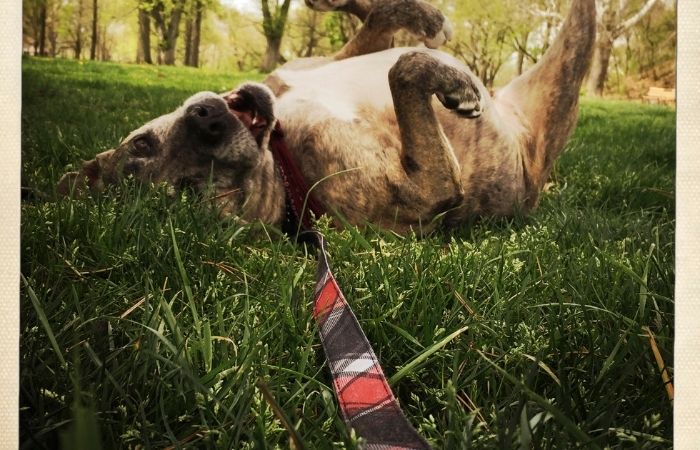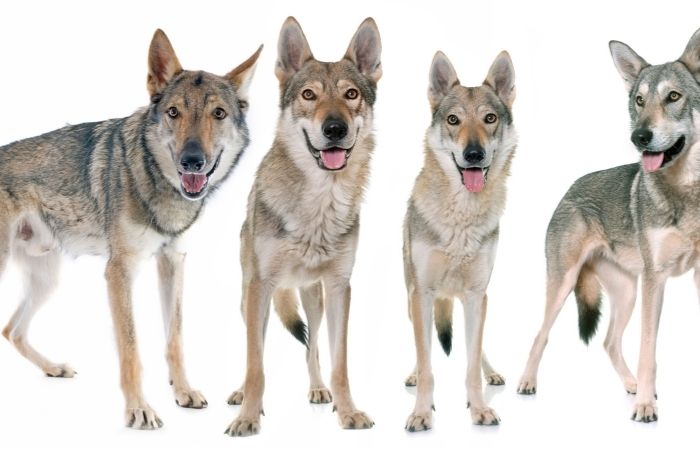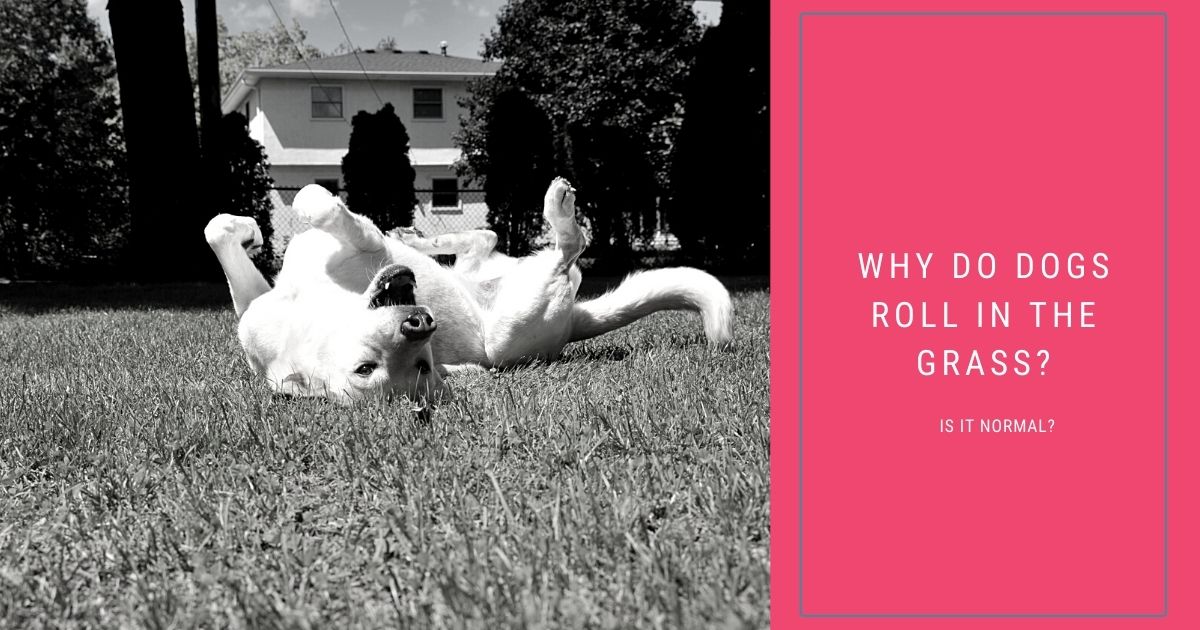Why Dogs Are Wired to Roll in The Grass?
We’ve all seen dogs joyfully leap into a patch of grass and throw themselves into it like their lives depended on it. But why do dogs roll in the grass? It may seem odd behavior, but rolling in the grass is typical for your canine friend. Does your dog come back from the park, daycare, or yard covered in grass and smelling a little out of sorts? Check out these theories of why dogs roll in the grass.

The Theories Behind Modern Dogs Still Rolling in the Grass
A Behaviour Inherited from Their Wolf Ancestors
Dogs are hard-wired in their roots to roll around in all things stinky. When their wolf ancestors would encounter a novel odor, it was common practice to sniff it then roll in it to get the scent on their body. It was particularly important to get the smell around their face and neck.
The wolves would then return to their pack and be greeted by other wolves. They would then investigate the new scent thoroughly. Often this alone could lead the wolves to follow the scent directly back to its origin. Wolves would also commonly roll in the grass to mask their own scent. The grass is covered in smells from humans, other animals, and the environment around them.

Dogs roll in the grass to rub those scents into their fur. This was an excellent way for their ancestors to conceal their own smell. This allowed wolves to be more unassuming when hunting for prey as their own odor would be masked.
Getting Rid of Unwanted Smells
A dog has more than 220 million olfactory receptors in its nose. That’s enormous compared to a human’s measly 5 million olfactory receptors. Due to this, dogs have a heightened sense of smell, and not all scents appealing to humans are agreeable to dogs.
We may love the perfumes and shampoos used on dogs to cover that doggy odor. However, our canine friends may disagree as the scent can be too potent or not to their liking. Dogs will then roll in the grass, which is full of smells more to their taste to mask the scent.
Adding Their Own Scent
Dogs, like many other animals, like to mark their territory. In the same way, a dog would rub on a new toy or bed. Rolling in the grass can be their way of letting other dogs know they were there. Likewise, dogs often rub against people to leave a trace of their scent and mark the individual as a pack member.
Alleviating a Bad Itch
Grass is mildly abrasive. When we walk on grass with bare feet, it can tickle, itch, or feel a bit prickly. In a way, individual blades of grass can function like bristles on a brush. Rolling around in the grass can help to loosen up the dirt stuck on the coat. It can also help dogs groom difficult to reach areas.
Dogs with itchy skin may love rolling in the grass to get that perfect scratch. However, rolling combined with extreme scratching can be an indication of an underlying health issue. This can include allergies or external parasites such as fleas. A vet visit can help identify the underlying cause of excessive itching. As always, ensure that your dog is on flea and tick prevention.
Obsessive Behaviour
A constant need to roll in the grass can be a sign of an obsessive-compulsive disorder. If every single walk or play outside involves copious rolling in the grass, this can become problematic for you and your dog.
Keep an eye open for things that excite your dog’s nose and call them back before they roll in ecstasy. Keeping them engaged with fun games and rewards can help them forget the stinky fun elsewhere. This will help limit the number of baths required and positively change your dog’s skin.
It Feels Good
Soft grass may just feel good to your dog. Many dogs are happy and relaxed as they roll in the grass. Watch as your dog rolls in the grass. Is it intensely or leisurely? Their level of relaxation should clue you in.
Show Their Personality
As some humans are exuberant and boisterous in nature, dogs can be too. As a result, dogs may be seeking excessive sensory stimulation as a means of expressing themselves.
Is It Dangerous For My Dog to Roll Around in Grass?
Rolling in the grass is normal behavior for dogs. The grass itself isn’t dangerous, but the hidden stuff in the grass can pose a risk. Some lawns are treated with fertilizers, pesticides, and herbicides. These can include active ingredients that are poisonous for dogs. In addition, these treatments can cause skin irritation and even chemical burns if left on the skin.
Grasses are also perfect hiding spots for fleas and ticks, which can be disease carriers. In addition, bacteria, viruses, and other parasites can also lurk in the grass or the dirt. Some patches of grass may also harbor foul odors. While this is not dangerous for your dog, it can be a detriment to your olfactory senses.
How to Stop Your Dog From Grass Rolling
Is It Allergies?
It’s essential first to determine if your dog is rolling in grass for fun or if your dog is excessively itchy as there is a dangerous side–in that foxtail grass in particular can be a serious hazard.
If your dog is rolling in the grass to scratch an allergy-related itch, it is vital to take steps to address this. Allergies are commonly related to food or environmental factors. Signs of allergies include redness or irritation of the skin, hives, swelling of the face, itchy and irritated ears, or sneezing.
It can be helpful to notice if your dog is also rubbing on other scratchy surfaces such as carpet or furniture. A vet visit can help to determine the underlying cause and help relieve any skin irritation or itching. This can then decrease how much your dog wants to roll in the grass.
Training
Basic dog training is also an important tool to stop your dog from rolling in the grass when you don’t want them to. In addition, positive reinforcement training is recommended rather than simply saying no or pulling on the lead.
If your dog starts to roll, redirect their attention and behavior to an action you want them to do. This can be as simple as sit or shake. When they perform this action, reward them with treats or praise. If you’re struggling to stop your dog from rolling in the grass, work with a certified trainer to figure out the best next steps.
Key Takeaways
Dogs will always want to roll in the grass, and there’s absolutely nothing wrong with it. There are various hard-wired reasons your dog likes to frolic and tumble in the grass.
However, it is vital that your dog is safe when rolling in the grass and that they enjoy it. Recall training is also beneficial to prevent rolling in dangerous areas.

